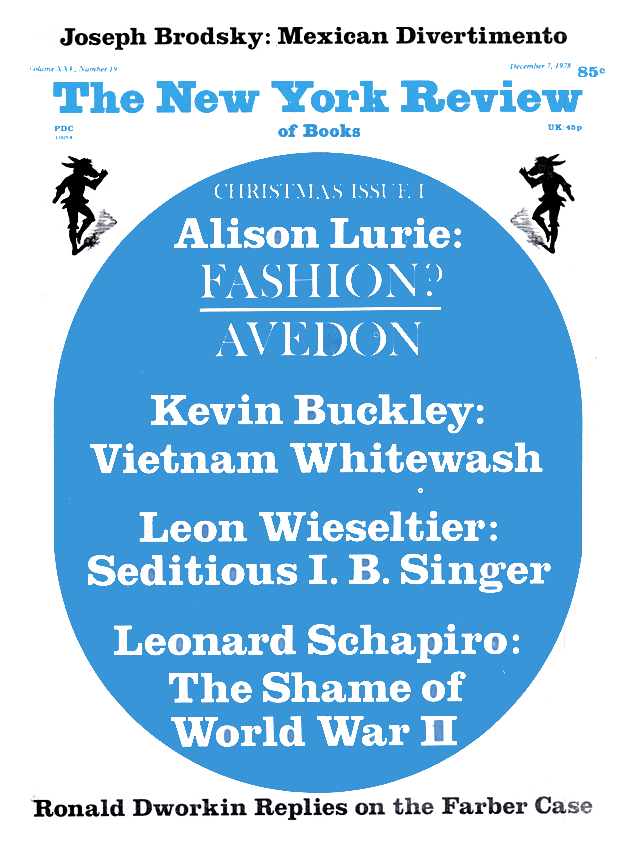In response to:
Deciphering the Big Book from the June 29, 1978 issue
To the Editors:
I found Frank Kermode’s review of R.E. Brown, The Birth of the Messiah one of those rare performances, an artfully handled précis of a book that sounds too forbidding for me to read personally [NYR, June 29]. I think I understand what he conveys, commenting apart from Brown, on the “midrashic” procedures in Matthew and Luke. Just one thing, it seems to me, remains to be said on the issue of the Virgin Birth. I have the impression that this narrative is intended as a kind of symmetrical parallel with the “birth” of Adam, who, too, comes into this world by an arbitrary act of God (and in this case, of a bachelor-god with no female consort—in the original Genesis story, a deliberate act separating itself from the acts of divine sexual generation among polytheisms, all of which logically require the pre-existence of the female principle) rather than by “normal” sexual generation. This “fact,” then, would confer on Jesus parallel opportunities with Adam, viz. the chance to start the world over again because of special exemption from sexual generation. To be sure, Genesis proclaims Adam’s “virgin birth” as an ideological warcry against early polytheisms with their hostile and dangerous female powers, while the evangelists proclaim Jesus’ virgin birth for a different purpose, possibly a moralistic outcry against late paganism’s seeming worship of sex. (Christian sources are of no value here, but many later pagan moralists suggest the same thing.)
But for whatever reasons put forward, the virgin birth of Jesus is a remarkably convenient way of sealing up the Old Testament, and starting off the New Testament with a story as electrifying in its way as the birth of Adam. That this tremendously successful piece of commentary would lead, in one direction, to the doctrine of the Trinity, and all the fierce Christological heresies and controversies, and in another direction to the massacres of people on both sides, and the wrecking of art-works portraying the Virgin, during the Reformation, could not have been foreseen, of course, by Matthew and Luke.
Douglas J. Stewart
Brandeis University
Waltham, Massachusetts
Frank Kermode replies:
The parallel between Jesus and Adam is at least as old as Paul, who saw Adam as a figure or type of Jesus, the “last (or second) Adam.” Luke traces the genealogy of Jesus back to Adam, and Matthew begins his book with the words “The book of the generation of Jesus,” which are meant to recall Genesis 5:1, where exactly the same formula is used. Of course it was not only the common but the antithetical aspects of Adam and Jesus that made this pairing interesting and gave rise to manifold subsequent elaborations of it, including Professor Stewart’s.
This Issue
December 7, 1978


